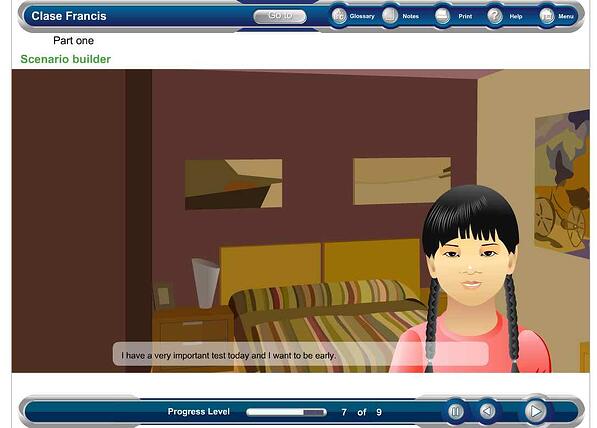This morning I had to give a ½ hour "class" on my son's Pre-K class. I had planned to talk about Volcanoes, one of my son's favorite topics. After some Google search, I decided to create a baking soda and vinegar volcanic eruption. Last night, after buying all materials and some testing, the experiment didn't work as expected. No big eruption, nothing that would capture their attention in class.
So it's 9pm, 11 hours before class, tired and clueless. Then it flashed on me: why not create a mini eLearning course for the kids, show some animations, some videos, some games. Something fun. After some experimentation, the eLearning course looks like:

- Intro screen: Robot avatar greets the kids: I had him say all their names, so kids we're amazed that the robot actually new all of them.
- Preloaded screen cat: explains we're going to play a game, my 8 year old helps me record the audio before breakfast this morning.
- Butterfly metamorphosis game: three kids volunteer to help the cocoon become a butterfly. They're successful.
- Preloaded screen dog: introduces the next game.
- Card discovery game: they have to help the animal "mother" find their missing animal "babies". All the kids want to play. Three of them flip the cards and win.
- Rescue the princess game: two more kids help the knight rescue the princess, answering some questions on the physical states of water
- Scenario builder: I have my 8 year old's daughter's "avatar" take the kids from her bedroom, getting ready for class, breakfast, class and finally a "sing along" counting game. 6 or 7 scenes.
- Rally game: the red team and the blue team compete to win the gold cup. The blue team wins by a wide margin.
- The cat closes up the session. My 6 year old records the audio this time.
In the end, a 25 minute class, run by the kids and the computer. Takes me 2.5 hours last night and 10 minutes recording with my daughters this morning.
Once more, SHIFT's eLearning courses promise of rich media, interactive, highly engaging yet very quick eLearning development holds true.
I leave the mini eLearning course at school, the kids want to play again…


